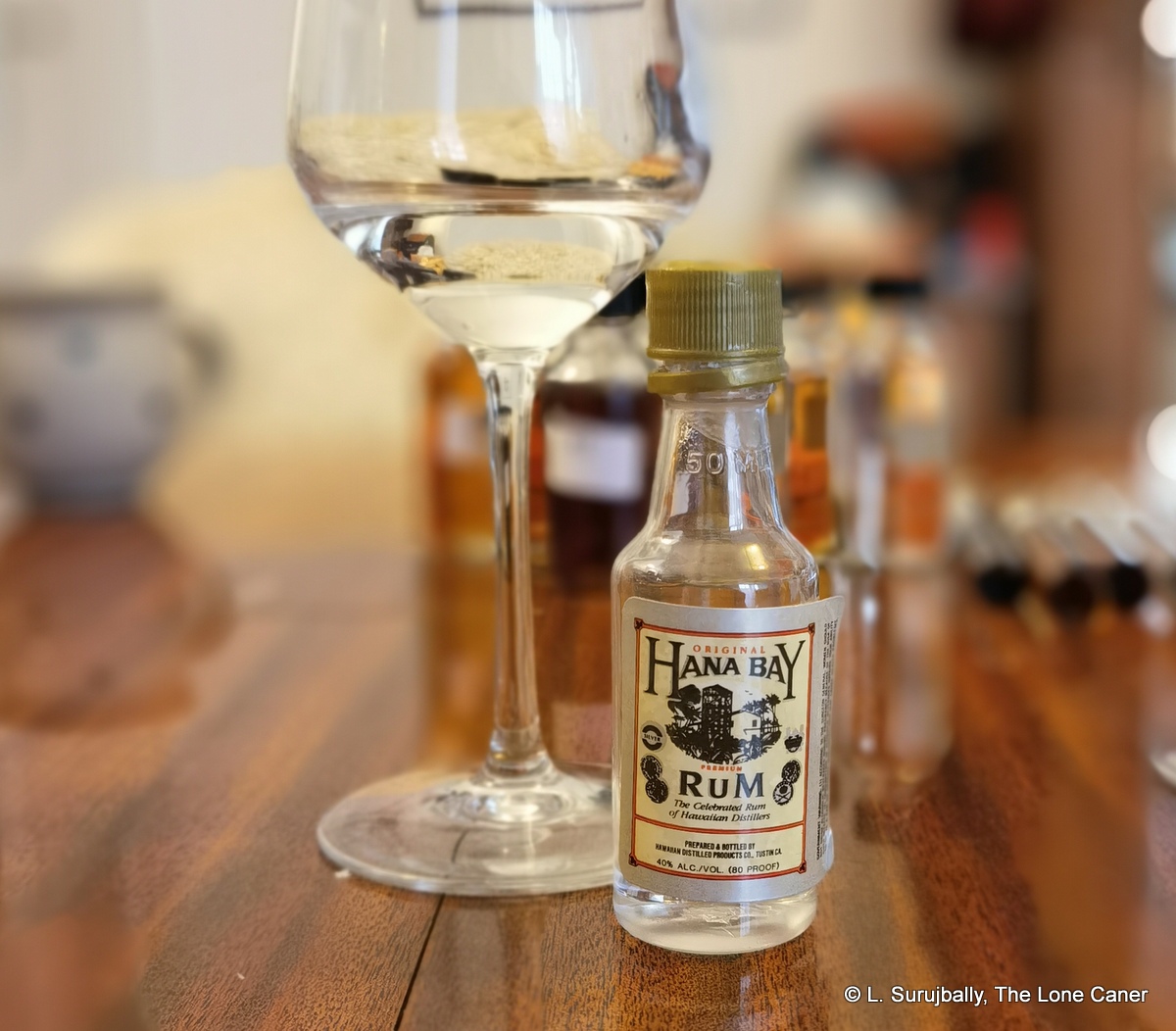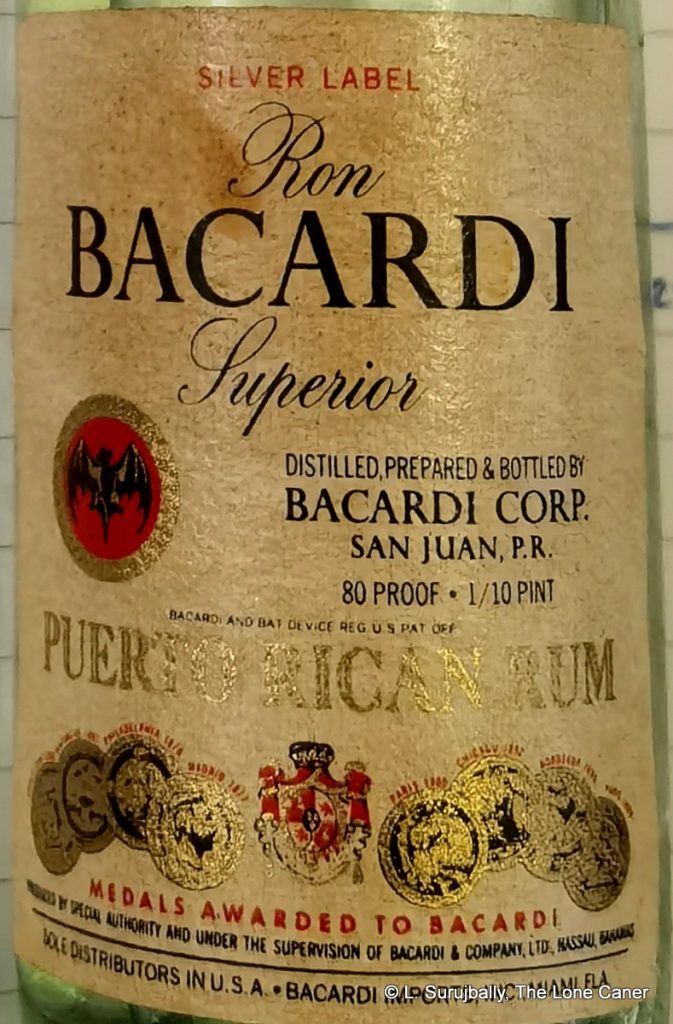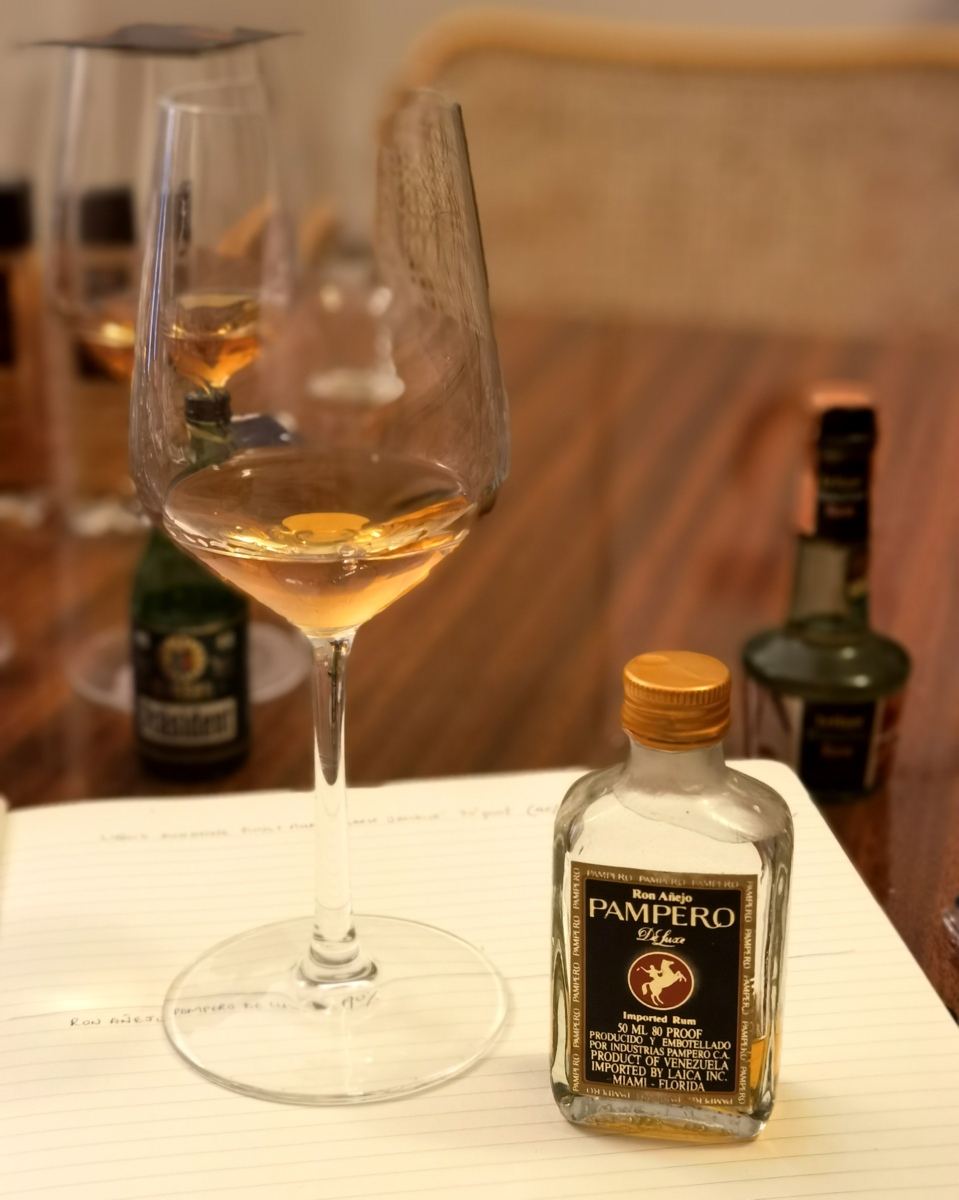Rumaniacs Review #R-163 | 1097
A good part of the label is missing, but even without that, this is what we know: it’s a rum branded “Blue Mountain Finest Old Liqueur Jamaica Rum” which popped up on one of the two “old rums” auction-site booths I patronised at the 2024 German Rum Festival (unlike the token system at other commercial brands’ booths, here one had to fork out actual coin for one’s dram). It was hand-dated 1930s / 1940s, and the proof point was not noted (the torn label’s missing portion probably had all that).
 Still, using that limited data set I was able to find an almost identical label (minor differences in text layout and colours), which came from a bottle of rum made by a UK company called Edward Young & Co. in the 1940s. Following that company’s filings suggested it existed between 1888-1986, except that other labels and logos made a better case that it had originally been founded in 1797 and officially registered in 1885; by 1936 they were exporting to other parts of the British Empire, including Ceylon and Canada
Still, using that limited data set I was able to find an almost identical label (minor differences in text layout and colours), which came from a bottle of rum made by a UK company called Edward Young & Co. in the 1940s. Following that company’s filings suggested it existed between 1888-1986, except that other labels and logos made a better case that it had originally been founded in 1797 and officially registered in 1885; by 1936 they were exporting to other parts of the British Empire, including Ceylon and Canada
Unfortunately, there’s nothing deeper – names of founders, 20th century owners, addresses, etc, are all hard to unearth without paying for it, and the company is now inactive. Their blurb does mention they were “distillers and wine, brandy and rum shippers”. The dating of the1940s for this bottle seems about right, but I believe the 1930s is more conjectural.
There remain unknowns: the strength was on the missing part of the label, and other variations of this rum were made, some at 70° proof (40% ABV), others at 35%. Based on my tasting and the label, I’d say 40%. Also, the estate / distillery of origin is never mentioned – in the 1940s there were more distilleries in business than currently, blending multiple sources was common and mentioning a single distillery or estate was not a thing, so for me to say more would be rank speculation – there simply is no information to be going on.
The use of the word “liqueur” to denote a more refined and upscale rum was common at one time (the famous Wray & Nephew 17 YO was called a “liqueur rum” for example. If you’re interested, see Matt’s excellent article on the subject) but during the 1960s it appears to have faded into disuse and now the word has a distinct meaning of its own, clearly separated from rum as we understand it.
Edward Young & Co were the originators of one of my favourite low-end mixing staples, the Guyanese / Canadian Young’s Old Sam, which came under the umbrella of the Newfoundland Liquor Corporation in 1999 – to this day the rum’s label sports the date of founding and the name of that original company. However, since there is no Edward Young any longer, and the rum is bulk stock shipped by DDL to Newfoundland for bottling and blending (instead of via the UK as was once the case), one can only assume that the label has all that on it for consistency and as a line to the past – not out of any sense of current commercial reality. But honestly, I sigh when I read stuff like that – I’d love to know more about the connection and its background.
Rum Auctioneer and other auction sites have had the rum or a variant of it for sale a few times. A 1947 edition sold in 2023 for £470, anther for £310 and the Old Spirits Company, in an undated post, advertised another for sale at $2,761 (assumed US$).
Colour – dark brown
Strength – Assumed 40% ABV / 70° proof
Nose – Even taking into account its provenance and relatively mild strength, this is a serious rum. Opens with pungent fleshy fruits – peaches, apricots, range peel, tangerines. Salt, leather, plastic, olives, rubber, and a mild briny solution
Palate – Thin and underpowered, but with many of the same notes. Oranges, candy, flowers, some plastic and rubbing alcohol. Slightly sweet, some leather and smoke, a touch of bitterness and vanilla from the barrel, but nothing untoward.
Finish – as short and brisk and purposeful as a salaryman’s stride.
Thoughts – Little identifies this as one distillery or another, and indeed, I do believe it’s a blend of pot and column still sources. The nose is really good and the palate, for all the brevity of my description above, does present with authority and verve. Really good rum to taste, not least because it shines a light into what taste profiles were eighty years ago, and how they have developed since then.
(#1097 | R-163)(87/100)
Other notes


















 Strength – 40%
Strength – 40%

















